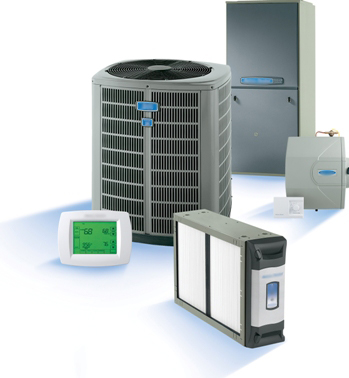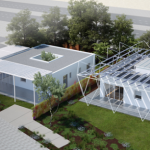 We all love a good myth. “Goldfish have a memory of only three seconds”, “Water drains backwards in the Southern Hemisphere due to the Earth’s rotation”, or maybe “A dog’s mouth is cleaner than a human’s”. It’s all fun stuff until we actually spend cash on things that we thought will do us good but end up to be a complete waste of money. This may come us no surprise but some very commonly believed energy upgrades seem to be just that – myths.
We all love a good myth. “Goldfish have a memory of only three seconds”, “Water drains backwards in the Southern Hemisphere due to the Earth’s rotation”, or maybe “A dog’s mouth is cleaner than a human’s”. It’s all fun stuff until we actually spend cash on things that we thought will do us good but end up to be a complete waste of money. This may come us no surprise but some very commonly believed energy upgrades seem to be just that – myths.
Rob Moddy is a fellow USGBC member who often whips out a masterful blog entry. It’s just so hard not to share this one with you. Here he highlights a talk given by building scientist Michael Blasnik at the Department of Energy’s National Weatherization Training Conference, particularly the problems with inaccurate computer models in determining weatherization strategies and effective home energy improvement measures.
As originally posted on GreenBuildingAdvisor.com, this is a list of common strategies for home weatherization that don’t save much energy. If you don’t want to waste your time and money, these are the strategies to avoid or closely evaluate:
- Furnace tune-ups. While a safety check is a necessity, annual furnace tune-ups don’t produce a marked improvement in efficiency, according to a study by the Oak Ridge National Laboratory. Blasnik says that a maintenance cycle of four to five years is typically adequate unless there are problems with the equipment.
- Sizing the furnace properly. Appropriate sizing for cooling systems is critical, but Blasnik says that there is no evidence to support that an oversize furnace is detrimental to the efficiency of the unit. Further, oversizing can compensate for duct design and installation issues. Of course, that’s not a good reason to settle for sloppy workmanship and oversizing furnaces. The take away is that it is not worth the investment to replace an properly functioning oversize furnace in an existing home.
- Basement duct sealing. Sealing ductwork in an uninsulated crawl space or attic can save 8-15%, but one study shows only a 0-3% savings with duct sealing in basements. Blasnik feels that these improvements are negligible because, for all intents and purposes, basements are “indoors.” Waste heat and equipment leakage preheat infiltration. He recommends fixing gaping holes but not to obsess about mastic application.
- Floor insulation. Adding floor insulation in results in up to 39 therms per year of savings, which calculates to around 25 years for payback. The reasoning for basements is because they behave more like inside than outside. If there is heating equipment in the basement, then ambient air is heated by waste heat, which in turn allows for regain in living space above the uninsulated floor. Insulating the floor would eliminate this positive effect on energy bills. Crawl spaces may see slightly more savings than basements when adding floor insulation, especially in very well ventilated crawl spaces with sealed ducts. However that addition can make ductwork even more outside. Alternatively, perimeter wall insulation would be a much cheaper choice and can achieve similar savings.
- Caulking and weatherstripping. These efforts show minimal savings, typically reducing infiltration by less than 10% and a savings of 0-3%. Blasnik cited a Canadian study that concluded that intensively caulking and weatherstripping extremely leaky windows can save about 0.5 therms per year, equating to around 50 cents.
- Window replacement. I find this statistic very interesting because I have been a proponent of historic window preservation for years. Replacing windows can save 2 to 3 therms ($2 to $3) per year per window, resulting in a payback period of over 100 years. Like all of these caveats, the existing conditions of homes should be scrutinized. Jalousie windows or superleaky units without storms could see better savings, but adding storm windows is more cost effective with higher savings potential. In the case of cooling, it’s more cost effective to try shading windows with landscaping, solar screens, or window film.
- Tankless gas water heaters. Tankless water heaters can save up to 1/3 of a home’s water heating requirements, or 35 to 75 therms per year. When replacing a tanked water heater, keep in mind that tankless heaters are expensive, topping $2,000, a 30- to 40-year payback. When coupled with efficient layout and very low-flow fixtures, savings can increase and the payback period can decrease, especially in new construction. One factors that plays into energy costs here: In homes with tankless water heaters, occupant behavior can increase energy usage. Endless hot water for showers and longer wait times at the sink can become the dirty truth in these homes. Most tankless units have a minimum activation flow rate, meaning that a trickle of water will not result in hot water coming out of the tap. A very low-flow showerhead does not trigger the flame in some instances, and homeowners turn on the bathroom sink to compensate.
- Cooling your attic. According to Blasnik, you won’t save much by insulating your rafters and cooling the space in the attic, unless your AC ductwork is located up there. In that case, savings could be up to 15%.[Editor’s note: on this issue, see Michael Blasnik’s posted comments below.] Blasnik says that the absolute worst approach is to add a powered attic ventilation fan above a leaky ceiling. This will depressurize the attic and, since the ceiling is leaky, the living space of the home. The depressurized home will force warm, moist air into conditioned space through holes in the envelope, pulling air out of the home and resulting in a warmer indoor environment.
Other things that Blasnik mentioned that don’t save cash:
- Changing furnace filters monthly. Once every [season] is adequate.
- Opening the refrigerator quickly and cleaning coils.
- Using drapes to insulate windows. This can actually create convective loops in the air space between the window and the drapes.
- Energy-saving kits. Two CFLs will not solve your astronomical energy bills.
“When improving the energy efficiency of the existing housing stock, care must be taken to gather information about each specific home as well as the empirical trends in the science of this industry. The best approach is to gather historical utility data, thoroughly inspect homes, use diagnostic equipment, and have knowledge of what works.”
Rob further skillfully points out a very crucial point in life: “The important underpinning [of this article] is really a necessary mindset best recorded by the ancient Egyptians, Greeks, Muslims, and the societies that followed: – Empirical evidence is absolutely necessary to support universal truths. Without the knowledge of that evidence, untruths can be repeated so much by so many people that they become “fact.””
“Every American should understand the scientific method enough to know the importance of seeking truth that is sufficiently supported by evidence. That’s what Blasnik does for us. The trouble with dogma in energy efficiency is that it doesn’t save the planet or anyone’s money. You wouldn’t go to a brain surgeon who learned about cutting through his intuition, so let’s not do that with our homes.”
 Rob Moody is a LEED AP and licensed LEED Faculty member. He is nationally known speaker, consultant and instructor in sustainability and green building. He works with his wife, Lindsay, at North Carolina-based Organic Think Inc, a green consultation and education firm. He is a former green builder and biology teacher.
Rob Moody is a LEED AP and licensed LEED Faculty member. He is nationally known speaker, consultant and instructor in sustainability and green building. He works with his wife, Lindsay, at North Carolina-based Organic Think Inc, a green consultation and education firm. He is a former green builder and biology teacher.![]()
 West Coast Green 2009 – What’s Your “Green” Idea?
West Coast Green 2009 – What’s Your “Green” Idea? Qatar is Building First Passive House Project but is There Hidden Agenda Behind It?
Qatar is Building First Passive House Project but is There Hidden Agenda Behind It? Rooftop Solar Lease Revisited: 5 Disadvantages or the Facts Leasing Companies Don’t Want you to Know
Rooftop Solar Lease Revisited: 5 Disadvantages or the Facts Leasing Companies Don’t Want you to Know
I don’t agree with these points. Research shows otherwise.
A couple mo. back we changed to low flow fixtures, sinks, and toilets and have seen a significant decrease in our water use and cost. We anticipate recover the intial cost with in a few months.